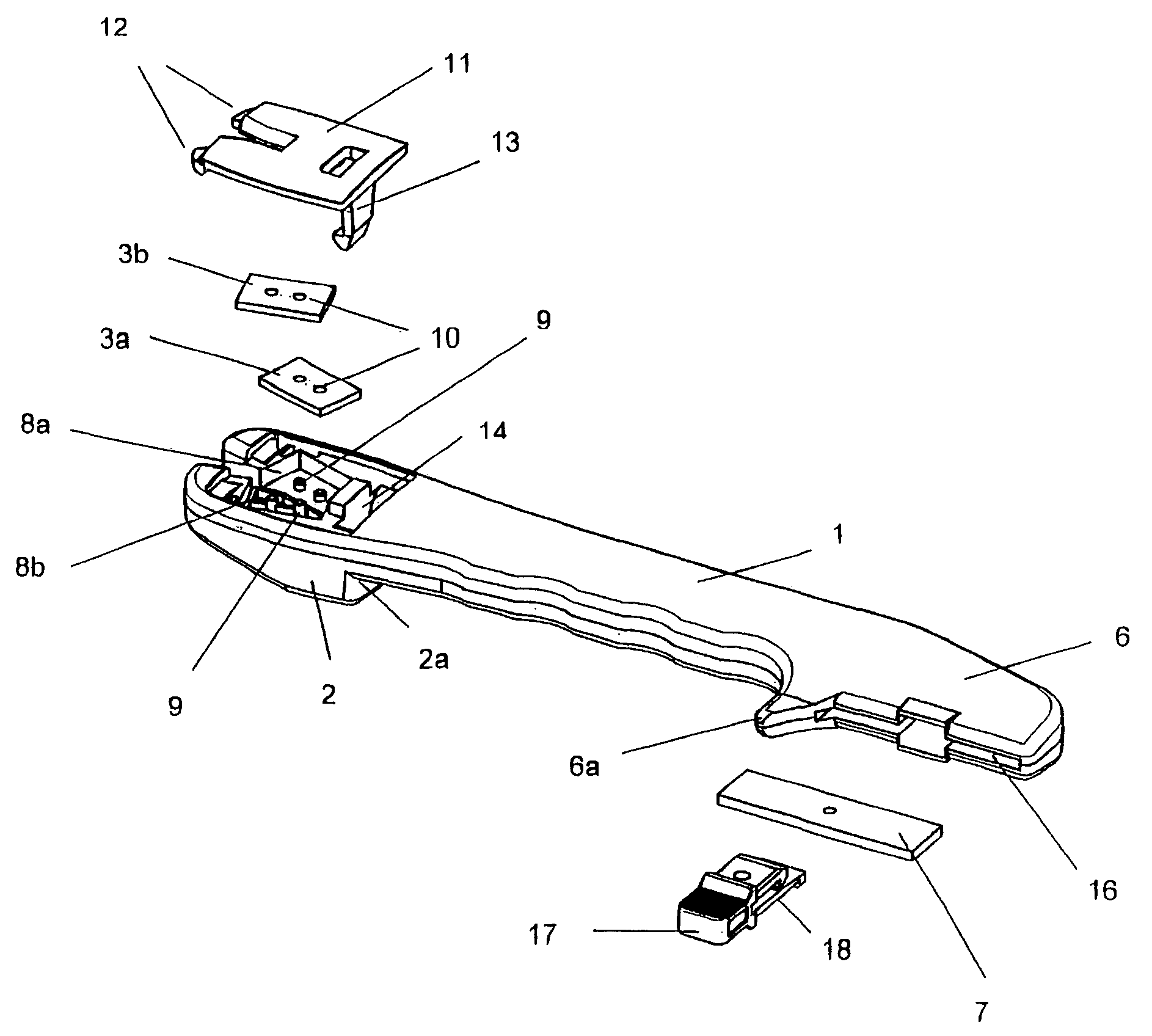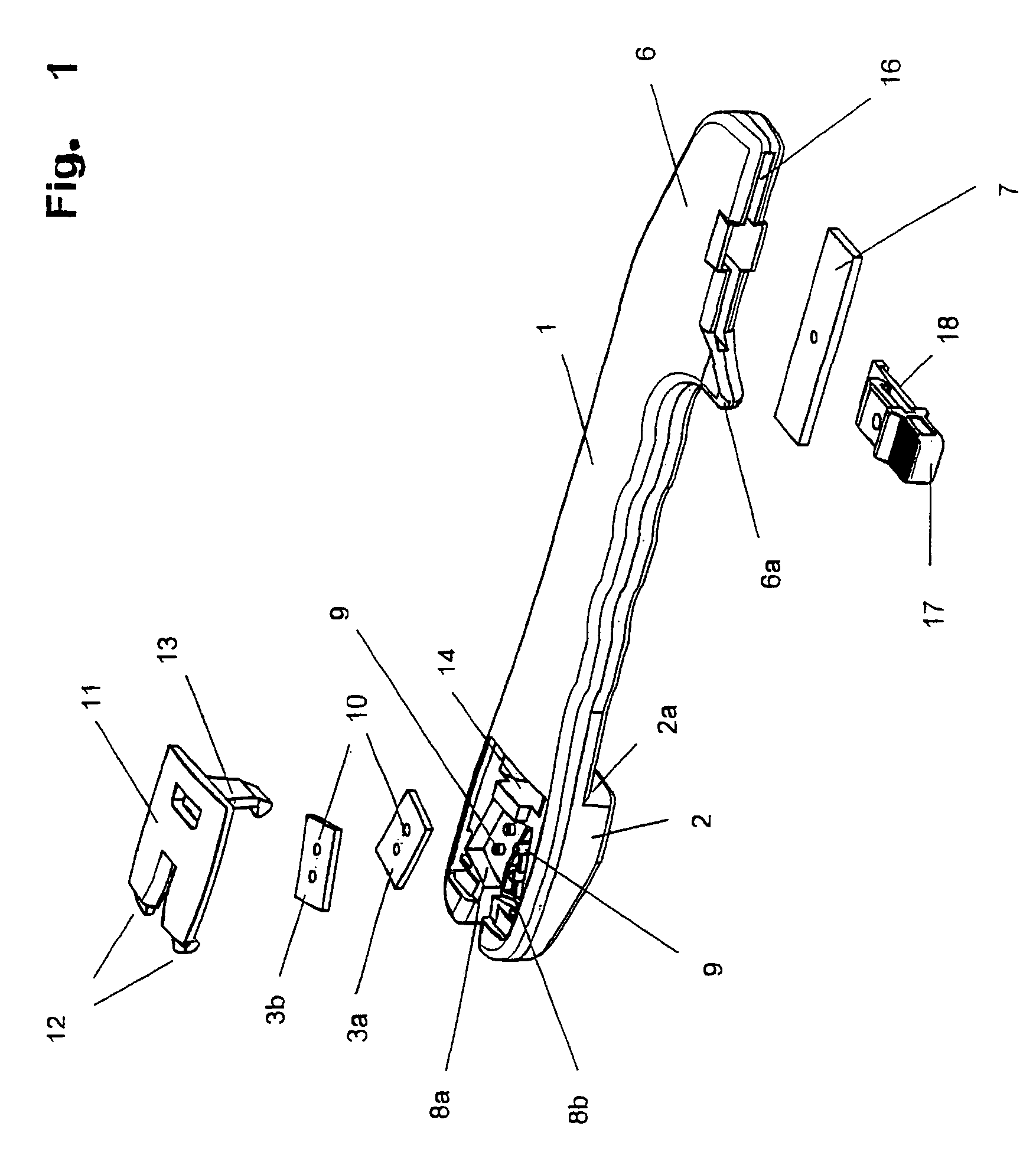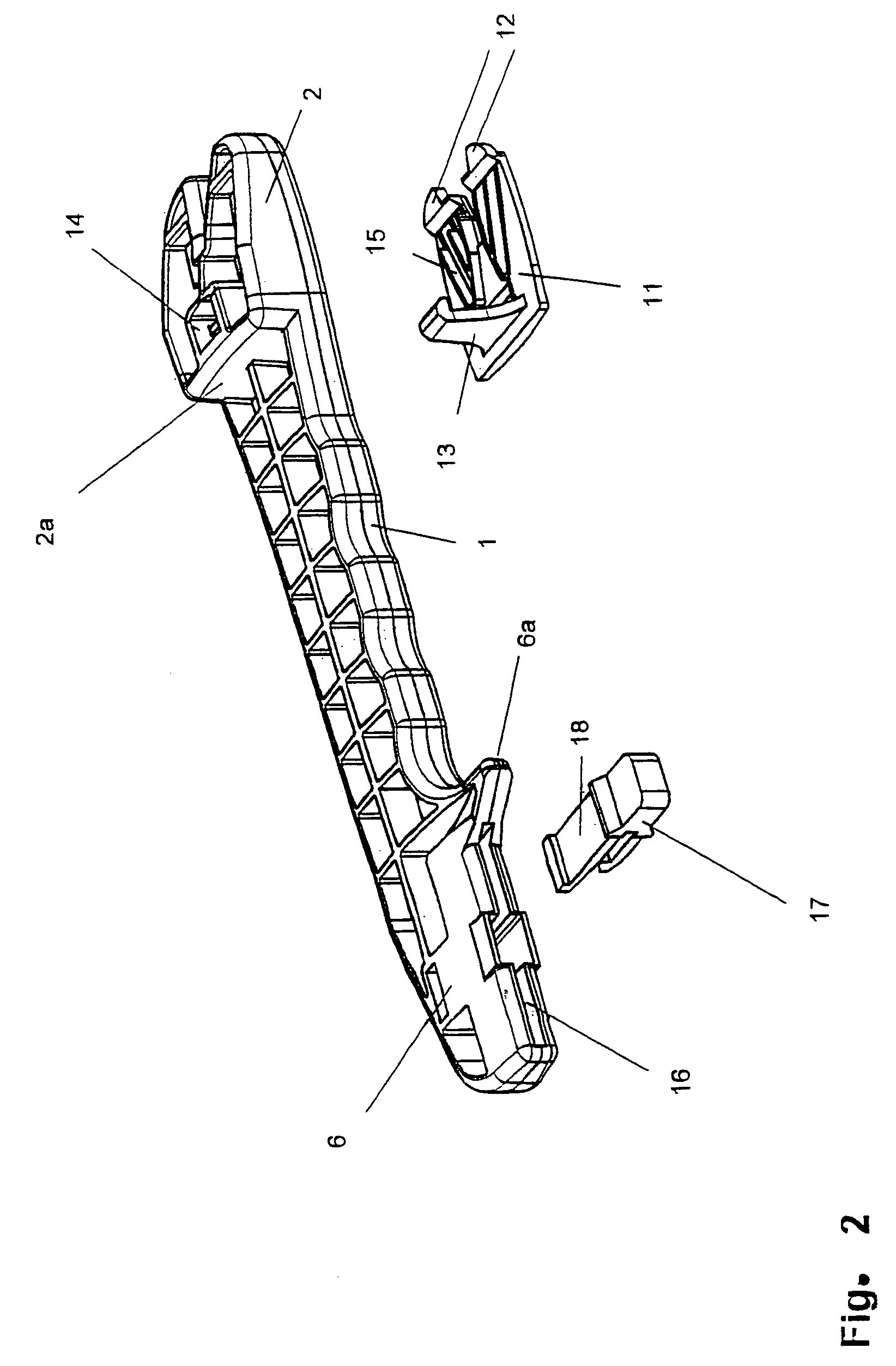Device for manually sharpening knives and other blades, comprising interchangeably mounted hard metal plates
- Summary
- Abstract
- Description
- Claims
- Application Information
AI Technical Summary
Benefits of technology
Problems solved by technology
Method used
Image
Examples
Embodiment Construction
[0021]FIGS. 1 to 4 show an embodiment of a device for the manual sharpening of knives and other blades in different views.
[0022]The device consists of a shaft-shaped gripping and holding part 1 which has a smooth lower side 1a. A functional part 2 follows at the one end of the gripping and holding part 1 which receives crossed carbide plates 3a, 3b arranged flatly over one another and surrounds them with the exception of one cut-out 4. The V-shaped sharpening zone 5 at the crossing point of the carbide plates 3a, 3b becomes accessible for the blade to be sharpened through the cut-out 4. The flat side of the carbide plates 3a, 3b is aligned parallel to the smooth lower side 1a of the gripping and holding part 1 in this process.
[0023]This function part 2 is particularly suitable for sharpening smooth knives. For this purpose, the smooth lower side 1a of the gripping and holding part 1 is placed onto a smooth support, e.g. a table top, and indeed such that the edge of the table top con...
PUM
| Property | Measurement | Unit |
|---|---|---|
| Angle | aaaaa | aaaaa |
| Angle | aaaaa | aaaaa |
| Thickness | aaaaa | aaaaa |
Abstract
Description
Claims
Application Information
 Login to View More
Login to View More - Generate Ideas
- Intellectual Property
- Life Sciences
- Materials
- Tech Scout
- Unparalleled Data Quality
- Higher Quality Content
- 60% Fewer Hallucinations
Browse by: Latest US Patents, China's latest patents, Technical Efficacy Thesaurus, Application Domain, Technology Topic, Popular Technical Reports.
© 2025 PatSnap. All rights reserved.Legal|Privacy policy|Modern Slavery Act Transparency Statement|Sitemap|About US| Contact US: help@patsnap.com



